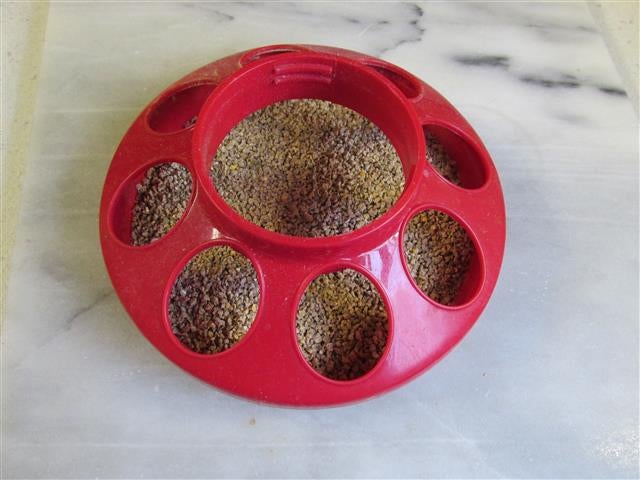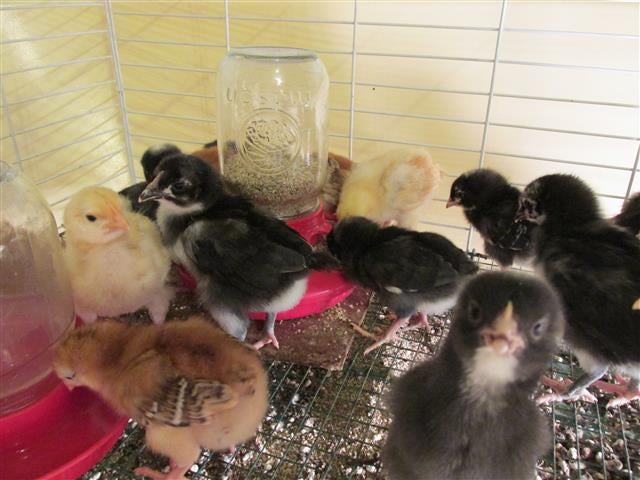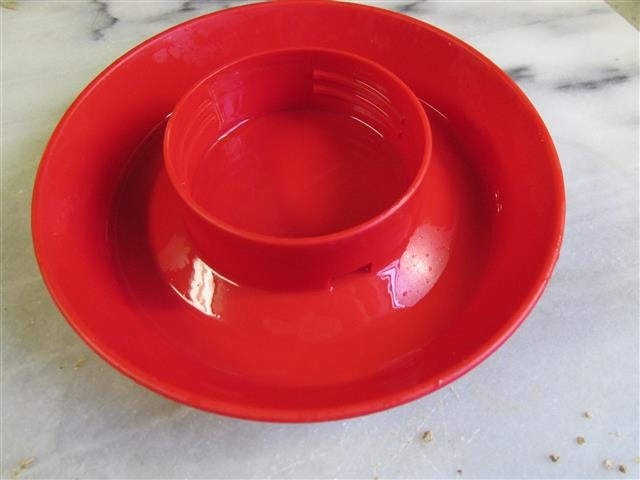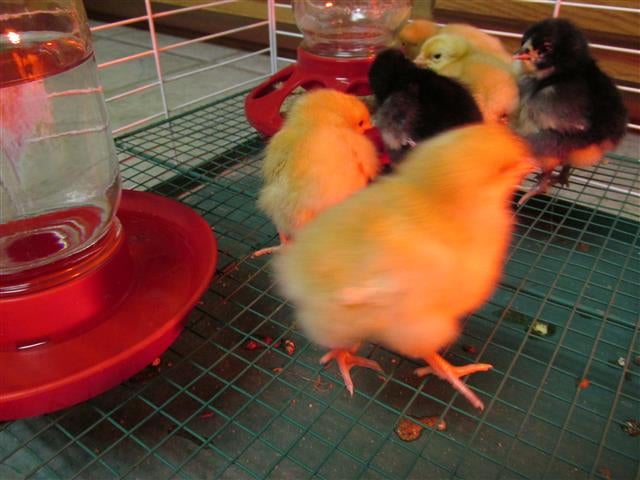Taking Care of New Baby Chicks
Kevin Felts 02.18.14
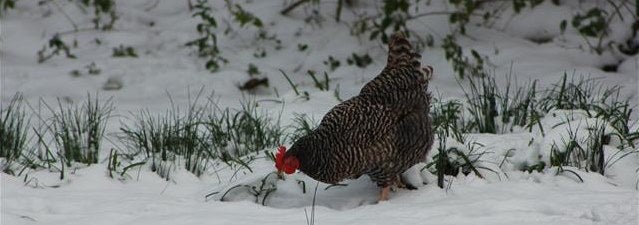
Are you interested in raising some baby chicks, but are worried about how difficult it is to get started? If you take the right precautions, raising chicks isn’t difficult, but it is a labor of love.
Chicks are small and cute, but provided they have the right conditions, they are not fragile. During the late winter and early spring, hundreds of thousands of chicks are mailed from hatcheries to farm supply stores and directly to customers. The vast majority of those chicks arrive alive and well.
Baby chicks should be provided with 5 things: a safe place that will protect them from predators, a heat lamp/heat source, food, water, and a clean place to sleep.
Let’s discuss each of those points in detail.
Keeping Chicks Safe
Baby chicks are an easy target for just about any kind of predator. They are an easy target for house cats, feral cats, aerial predators, snakes, opossums, minks, weasels, and raccoons, to name a few.
My first experience with raising chicks resulted in several chicks being killed by a opossum. The chicks were kept in a metal cage that had 1/2 square hardware cloth on the floor, and 1 inch squares on the sides and top. It was more like a bird cage than a cage for keeping baby chicks.
Out of a dozen chicks, about half of them were killed on a single night. A trap placed outside the shed the following night caught the opossum.
The wire on the side of the cage was large enough for the opossum to reach through, and grab and kill the chicks. It looked like the opossum was able to get parts of the chicks though the wire and eat them, such as a head, wings and legs.
If chicks are the be kept outside, use a wire cage that has holes no larger than 1/2 inch, such as 1/2 inch hardware cloth. The cage should be kept away from predators.
There are other options besides cages. A predator proof shed will do. Just something to stop your chicks from becoming an easy meal.
Heat Lamp/Heat Source
A mother hen will keep her chicks warm. Chicks raised in a hatchery do not have a mother to keep them warm, so that job falls to you. Chicks should be provided with a heat source that they can get close to, but one that will not burn them. The chicks should also have enough room to move away from the heat source if they get too hot.
I keep a 75 watt light bulb on my chicks. But then again, my chicks are kept in a cage that is in my bathtub.
Once my wife and I build our bard, I will use a 250 red heat lamp suspended about 2 feet off the floor with a chain.
The heat lamp should not be left where chicks can touch it. A red or white 250 watt heat lamp can burn, melt, or even catch material on fire. Please take precautions not to allow anything to touch or come too close to the heat source. Heat lamps can catch paper, hay, and other combustible material on fire.
Food
Young chicks are fed what is called medicated chick starter. This starter contains around 20% protein and is to be fed from 0 – 8 weeks of age. The starter looks like crumbles, which makes it easy for young chicks to pick up and eat. At this early age hen scratch is too large for them.
Medicated chick starter is not the same as giving them antibiotics. The medicated starter is designed to protect young chicks against Coccidia, which causes Coccidiosis. Coccidiosis can cause bloody diarrhea, and in some cases it will kill the chick. As the chick grows and its immune system matures, the chick will develop a resistance to Coccidia. The medicated starter is to help the young chicks who have not developed a resistance to Coccidia.
When the chicks are around 6 – 8 weeks old, they are moved off the medicated chick starter to a non-medicated chick grower. The chick starter has around 20% protein, the chick grower has around 18% protein.
At around 16 weeks old switch from the chick starter to laying pellets. The chicks may take a few weeks to adjust from crumbles to pellets. When I first introduced my 4 month old chicks to pellets it refused to eat them. I ended up mixing pellets and crumbles together for a few weeks.
Chick starter and chick grower are designed to supply all the nutrients a growing chick needs.
The feed dispenser is either long, or round, but both will have holes in it. The holes allow the chick to get feed from the dispenser, but donot allow the chick to scratch at the food. Chickens have a natural instinct to scratch at the food and at the ground. The holes prevent the chick from scratching the feed out of the dispenser.
Most round feeders on the market are designed to accept either a pint or quart mason jar. So there is no need to buy a special jar for the feeder. Do not worry about the chickens breaking the glass. The glass is too thick and the chicks are not strong enough to break the mason jar.
Water
Chicks, and even full grown chickens, need access to clean drinking water at all times. I say clean, but my chickens will drink water out of a mud puddle.
The chick waterer, just like the chick feeder, should be designed to work with either a quart or pint mason jar. Unlike the feeder, there should be a single hole for the water to come out of. The water fills up the bowl, the hole is covered with water, which creates a vacuum inside the jar.
From time to time the chicks will poop in the bowl.
The water bowl and the dispenser should be wiped out when the jar is refilled.
Clean Bedding
Baby chicks are nasty. Actually, chickens in general are nasty. They crap everywhere – in the food, in the water, where they sleep. Chicks will crap anywhere and everywhere they can. For hygiene purposes I changed out the paper the chicks stand on.
When the chicks are only a week old I put a piece of cardboard in the cage for them to stand on. The cardboard gives the chicks something to stand on besides the wire, and they like to sleep on the cardboard. When the chicks got around 2 weeks old I was having to change the cardboard everyday.
For the first set of chicks my wife and I got 2 years ago we used newspaper for bedding. With this set we are using a rabbit cage that has a pan for easy cleaning. The pan is a lot more sanitary and easier to clean than using newspaper.
Conclusion
If you want to get some chicks, it is a lot easier than it sounds. The main thing as I said is to keep them warm, safe, fed, and watered. This is a true labor of love.
When the chicks finally move to the chicken house and start producing eggs, you will be rewarded for your efforts.
